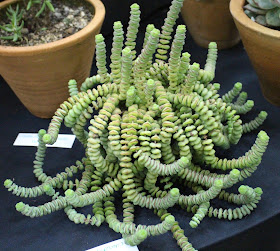By Margaretta wa Gacheru (posted 29 May 2019 for 31 May)
When Angela Wachuka and Wanjiru Koinange founded the Book
Bunk in 2017, it wasn’t just to rehabilitate all three Kenyan national
libraries: the main one being McMillan and the two branches in Kaloleni and
Makadara. It was also to advance what’s been described as a ‘reading
revolution’ in Kenya.
The job of renovating all three dilapidated structures is a
major task which Wachuka and Wanjiru have relished. It’s by no means done, but
interesting young people in reading and utilizing the libraries could be an
even more challenging feat.
That’s why it was refreshing to see so many young people at
the “Tribute to Maya Angelou” performance at the Makadara Library Branch last
Saturday.
Many were seated around the large reading room that had been
converted into performance space by the mother-daughter team of artists, actress
Mumbi Kaigwa and musician Mo Pearson.
Others relaxed on the floor right in front of the two women
who had brought with them a whole lot of indigenous African instruments that
the youth would get their chance to play.
Mo also brought her acoustic guitar and Mumbi brought her
talent as a lover of poetry, particular Maya Angelou’s.
The award-winning African American poet, singer, memoirist
and civil rights activist died almost exactly five years ago, on May 28th,
2014 at the age of 86. But because she left so much powerful poetry behind (which
she often performed), her memory will never die. Not if performers like Mumbi
and Mo have anything to do with it!
Mumbi performed several of Maya’s best-known poems, including
‘As I rise’, ‘Hold fast to dreams’ and ‘Phenomenal Woman’ among others. And Mo
sang her own original songs which were partially inspired by Maya.
How their performances fit into the Book Bunk agenda was by
bringing alive words that would otherwise be left of the written page. What’s
more, children in the audience were invited up to perform with the musical
instruments as Mumbi dramatized Maya’s moving words. That interactive element
made their performance even more meaningful to the young teens who were the
main age-group in the hall.
Mo’s singing was too brief, but it was beautiful and
definitely sent electric changes through the audience who easily identified
with Mo who’d just graduated from university a relatively short time ago.
Mumbi ended their performance by dramatizing one of Maya’s
best loved poems, ‘Hold fast to dreams.’ After that she opened the floor,
inviting anyone to ask questions or say something in response to their show.
This was when things opened up.
Initially, in typical Kenyan style, the room fell silent and
nobody said a word until Valentine Omwaka Nyanje, age 13, finally raised her
hand, then stood and sounded like she could become Kenya’s next Maya Angelou
equivalent.
The standard eight student from St John’s Primary School in
Kaloleni didn’t share a poem. Instead, she shared sentiments similar to Maya’s
main message which is to believe in yourself. She spoke about the ‘kihere here’ or the passion inside her
that was pushing her to do special things with her life. She said everyone had
that ‘kihere here’ and ought to listen to it and act upon it.
After she sat down, a number of kids raised their hands and
took turns sharing their hopes, dreams and ambitions. Their enthusiastic
remarks could have gone on all afternoon if Wanjiru Koinange hadn’t gotten up,
thanked everyone for coming and then invited them to have a delicious lunch,
courtesy of the Book Bunk.
The one aspect of the event that might have been slightly
better suited to an older audience was an audio-tape of Maya Angelou speaking
along with a number of African American poets like Langston Hughes, the
champion boxer Mohammed Ali and other civil rights activists, including James
Baldwin and Martin Luther King, Jr.
Personally I enjoyed Mumbi’s tape because it was an excellent
means of establishing the political and social context within which to place
Maya’s life work.
One person who was delighted with both the Book Bunk’s and
the Mumbi-Mo initiative was Douglas Kierieni, the retired banker and columnist
at Business Daily.
“This is like a dream come true for me,” he said beaming as
the children got in line to eat well-cooked green grams, rice and cabbage.
“I’ve been appealing in my BD column for someone to revive the libraries, and
now it’s happening.”


































